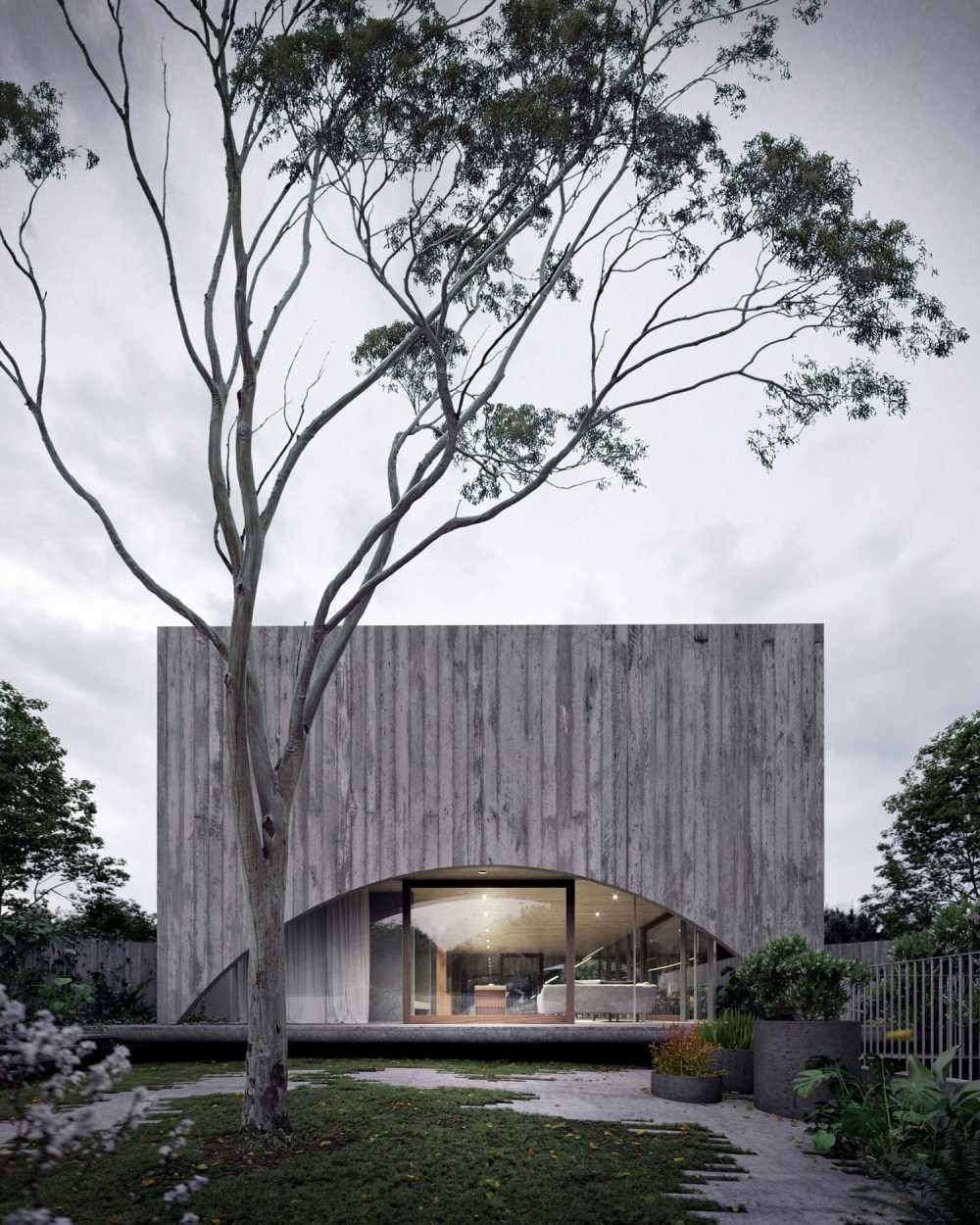 Hawthron House, 2018 in Hawthorn, Victoria by Edition Office.
Hawthron House, 2018 in Hawthorn, Victoria by Edition Office.
 Hawthron House, 2018 in Hawthorn, Victoria by Edition Office.
Hawthron House, 2018 in Hawthorn, Victoria by Edition Office.
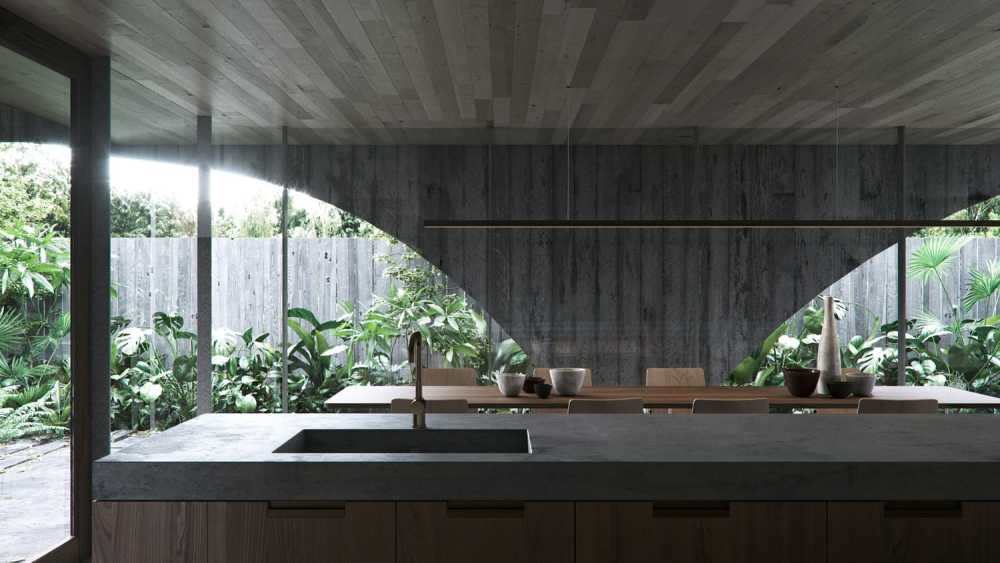 Hawthron House, 2018 in Hawthorn, Victoria by Edition Office.
Hawthron House, 2018 in Hawthorn, Victoria by Edition Office.
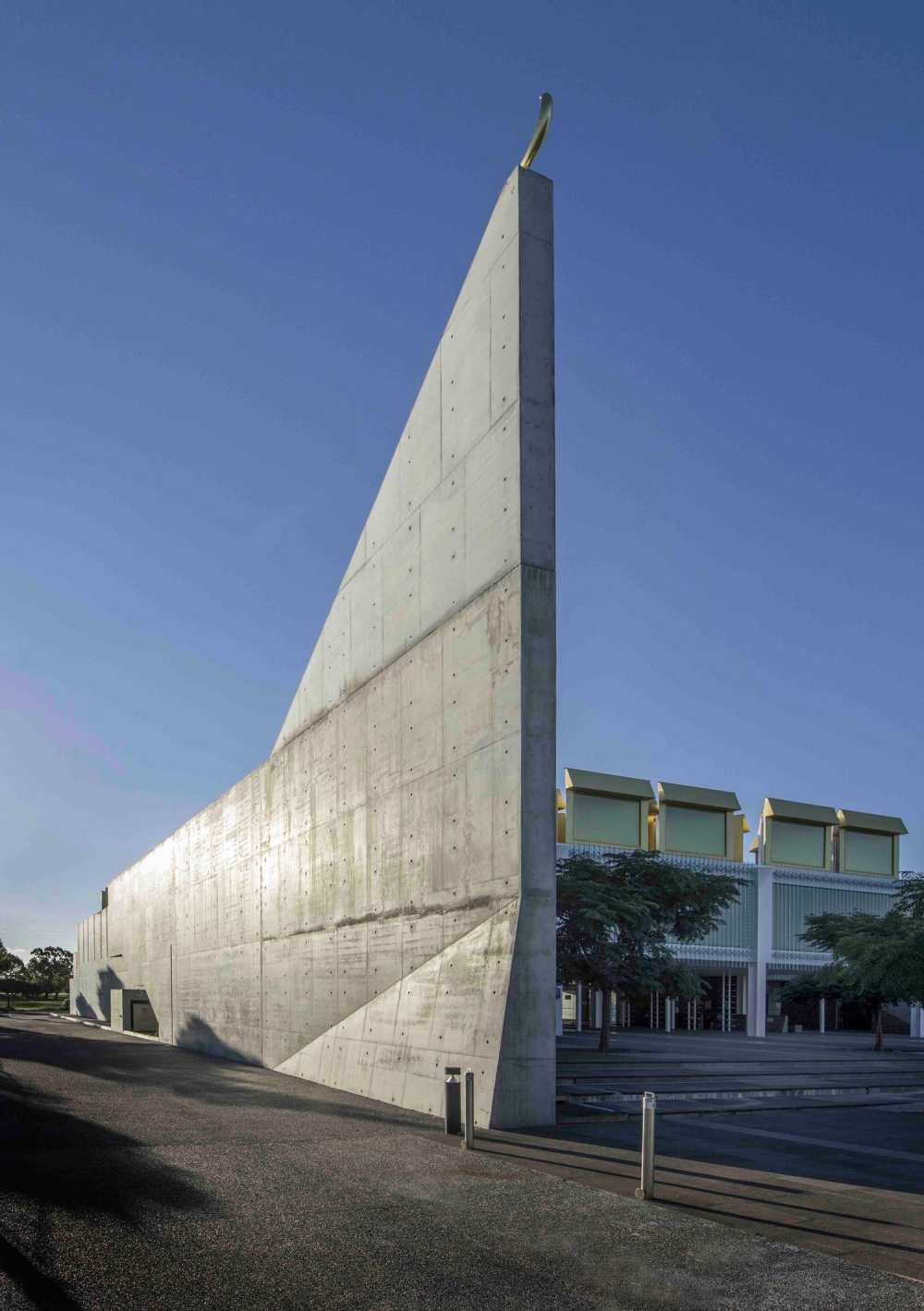 Australian Islamic Centre, 2016 in Newport, Victoria by Glen Murcutt. Photo by Anthony Browell.
Australian Islamic Centre, 2016 in Newport, Victoria by Glen Murcutt. Photo by Anthony Browell.
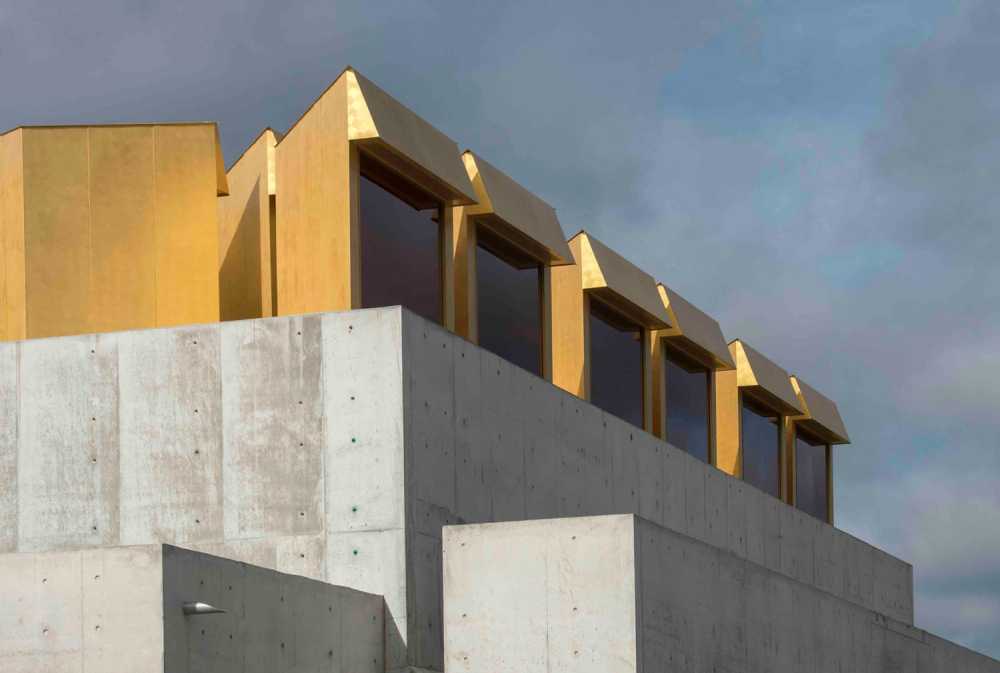 Australian Islamic Centre, 2016 in Newport, Victoria by Glen Murcutt. Photo by Anthony Browell.
Australian Islamic Centre, 2016 in Newport, Victoria by Glen Murcutt. Photo by Anthony Browell.
 Concrete 02, 2015 by Rhiannon Slatter. Edition of 6 plus AP pigment ink on cotton rag (1070 x 1590).
Concrete 02, 2015 by Rhiannon Slatter. Edition of 6 plus AP pigment ink on cotton rag (1070 x 1590).
 Untitled (Self Portrait, Underground), 2017 by Sanne Mestrom. Materials include; bronze, concrete & steel (1560 x 1000 x 830). Photo courtesy of the artist and Sullivan+Strumpf.
Untitled (Self Portrait, Underground), 2017 by Sanne Mestrom. Materials include; bronze, concrete & steel (1560 x 1000 x 830). Photo courtesy of the artist and Sullivan+Strumpf.
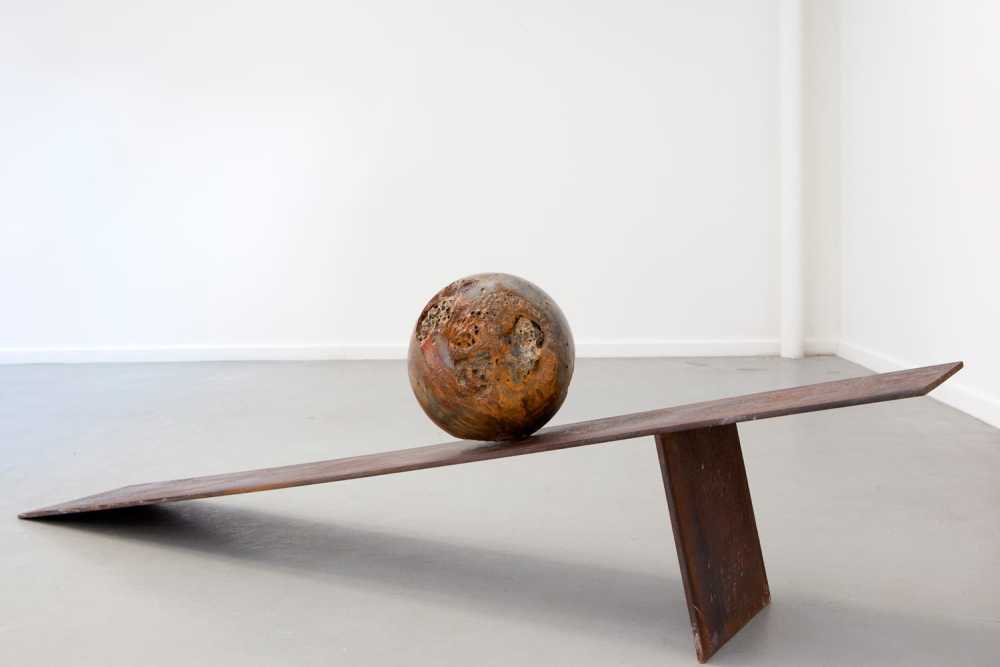 Remainder No.12 (incline), 2017 by Jamie North. Materials include cement, blast furnace slag, marble dust & steel (300 dia, slide 370 x 2000 x 300). Photo courtesy of Jamie North, Sarah Cottier Gallery, Sydney.
Remainder No.12 (incline), 2017 by Jamie North. Materials include cement, blast furnace slag, marble dust & steel (300 dia, slide 370 x 2000 x 300). Photo courtesy of Jamie North, Sarah Cottier Gallery, Sydney.
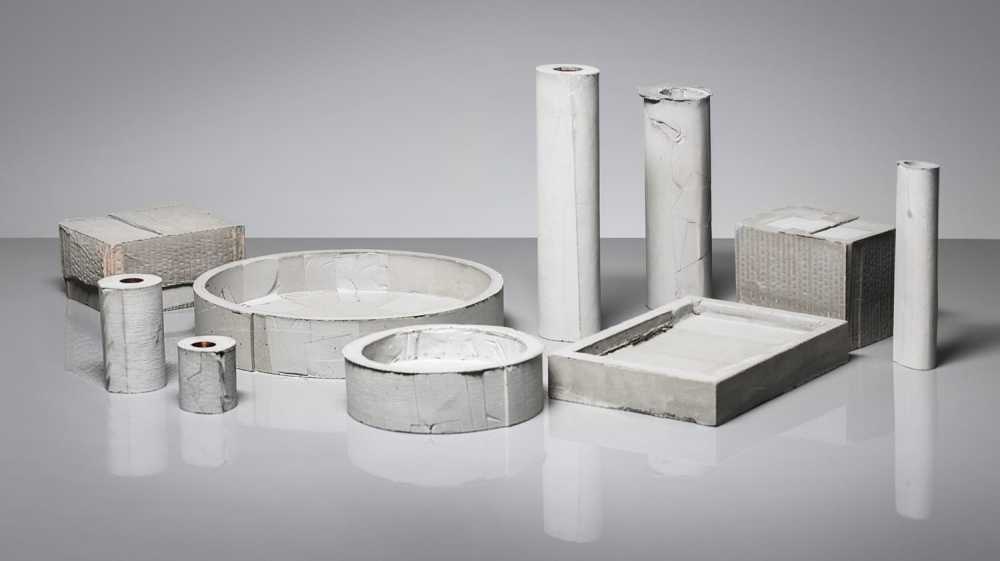 CHEB concrete product, 2018 by Christine Cholewa and Deb Jones (CHEB). Materials include; concrete & brass. Photo by Craig Arnold.
CHEB concrete product, 2018 by Christine Cholewa and Deb Jones (CHEB). Materials include; concrete & brass. Photo by Craig Arnold.
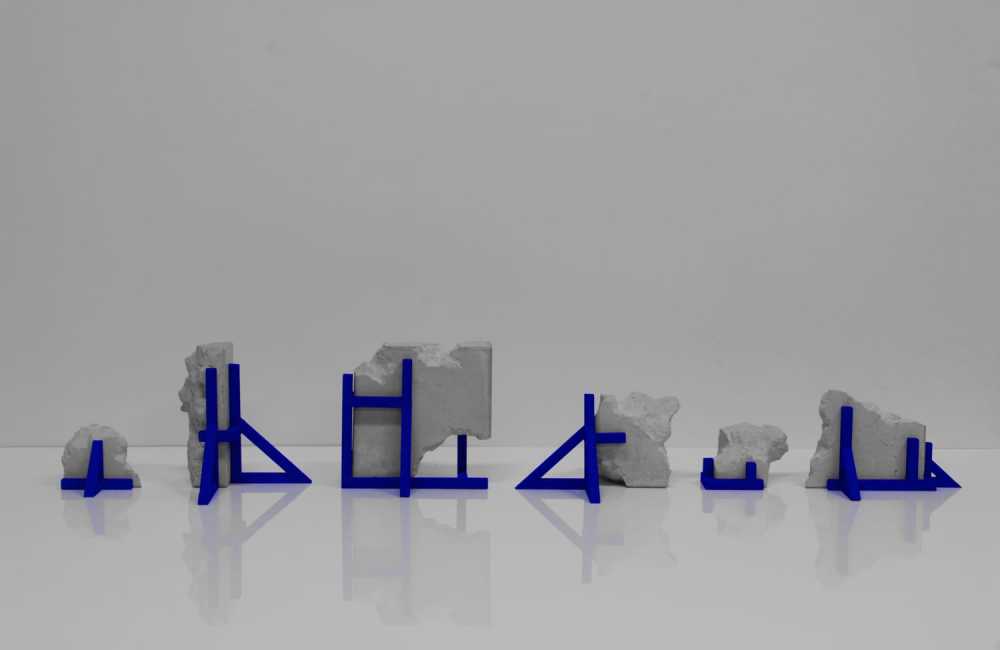 Concrete Topology (12 maquettes), 2018 by Tom Borgas. Materials include; concrete, wood & acrylic paint. 12 Fragments – installation 144 x 1895 x 150). Photo by Tom Borgas.
Concrete Topology (12 maquettes), 2018 by Tom Borgas. Materials include; concrete, wood & acrylic paint. 12 Fragments – installation 144 x 1895 x 150). Photo by Tom Borgas.
 QTZ Footrest, lounger, lounger without headrest, and table, 2016 by Alexander Lotersztain. Photo by IVANKA Concrete.
QTZ Footrest, lounger, lounger without headrest, and table, 2016 by Alexander Lotersztain. Photo by IVANKA Concrete.Beginning on March 1, Adelaide’s JamFactory will exhibit CONCRETE: art design architecture. The nationally touring exhibition showcases 21 projects by contemporary Australian artists, designers, and architects representing a cross-section of current practices and relationships to concrete. The projects are markedly diverse, highlighting the versatility of the material across everything from monumental architecture to bathroom hardware to terrazzo art. Concrete for the win. Read on for our roundup of some exhibition highlights.
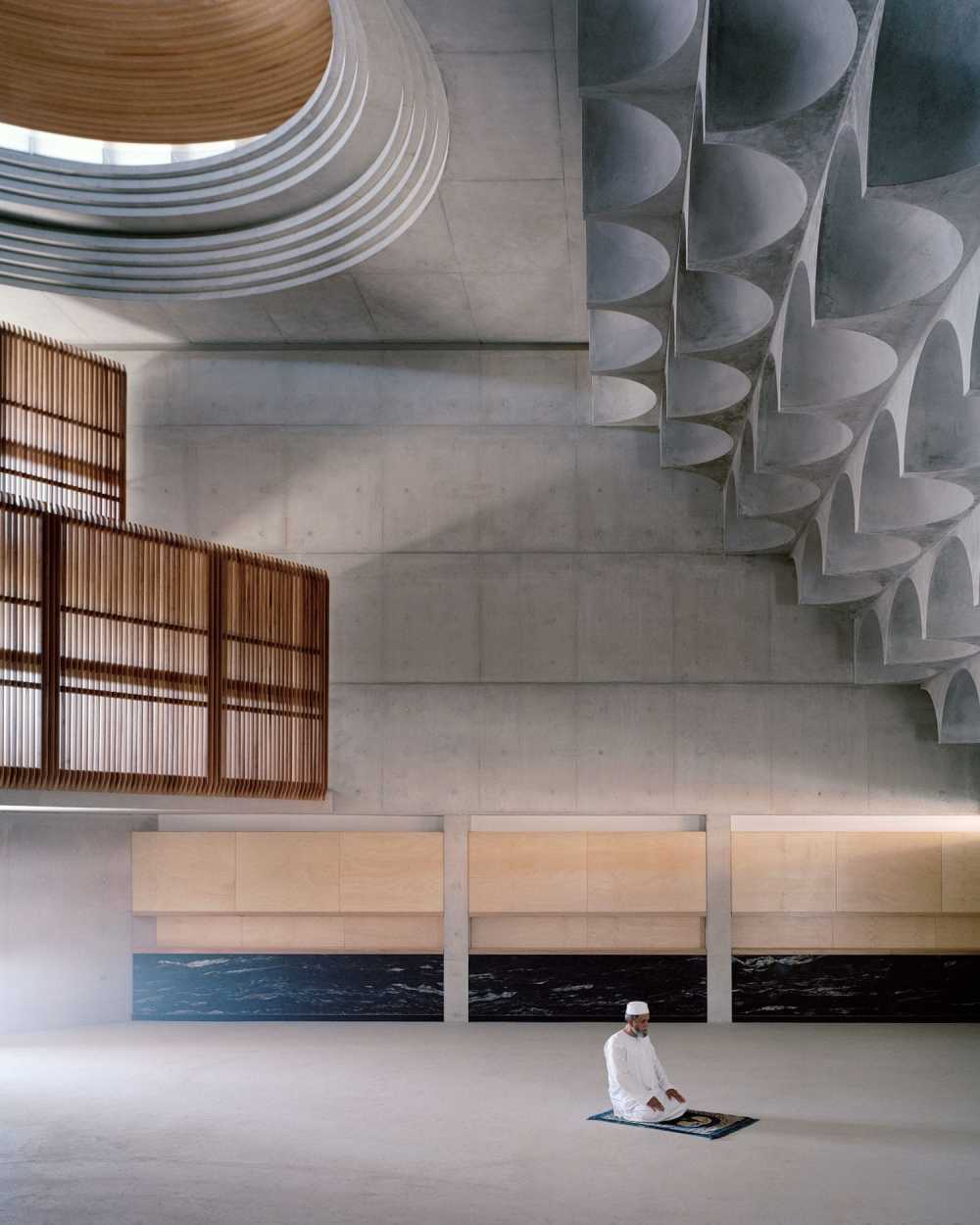 Punchbowl Mosque, 2018 by Candalepas Associates. Photo by Rory Gardiner.
Punchbowl Mosque, 2018 by Candalepas Associates. Photo by Rory Gardiner.
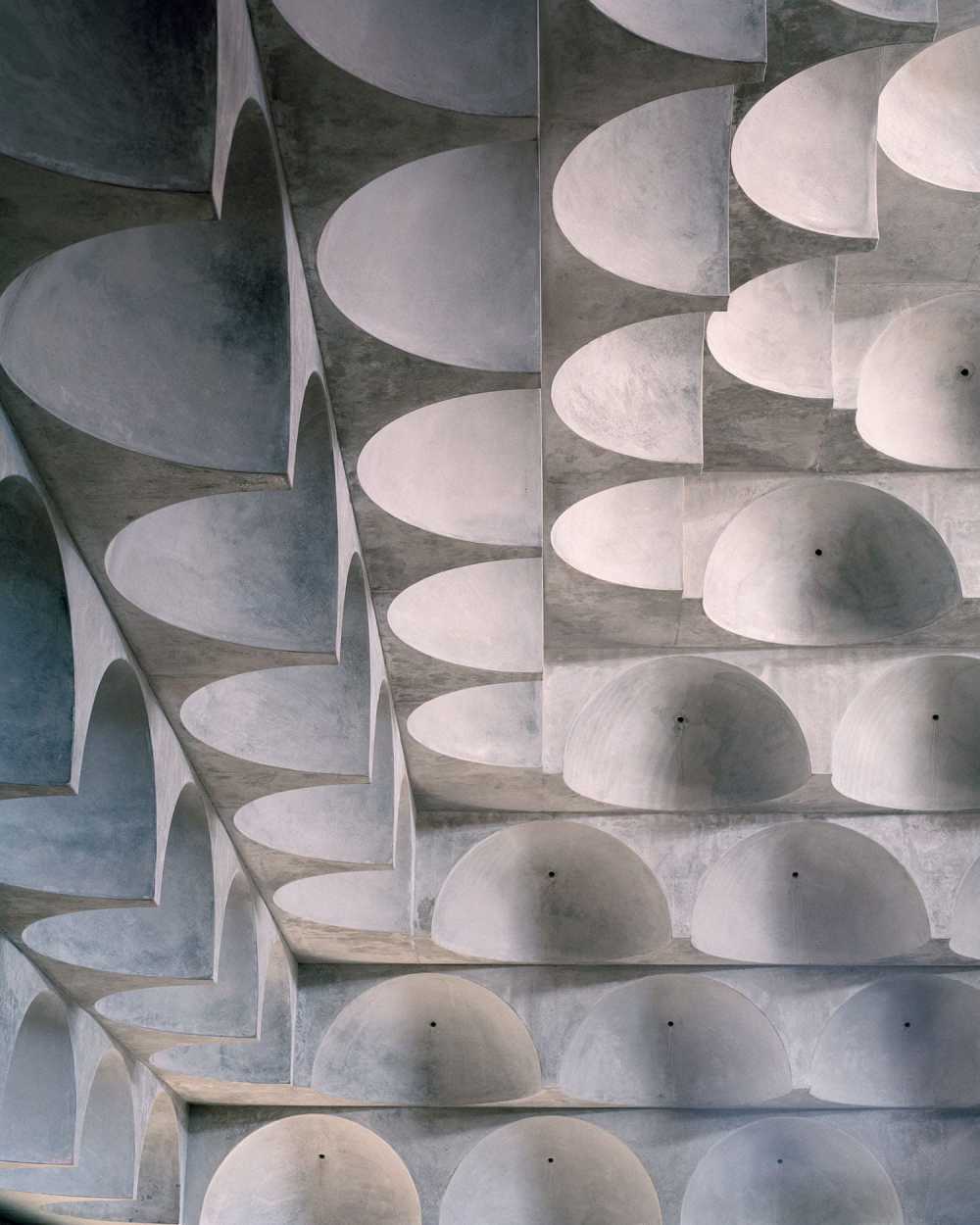 Punchbowl Mosque, 2018 by Candalepas Associates. Photo by Rory Gardiner.
Punchbowl Mosque, 2018 by Candalepas Associates. Photo by Rory Gardiner.Punchbowl Mosque by Candalepas Associates // Set on an unassuming residential street, Punchbowl Mosque is startlingly beautiful. The concrete ceiling is the showstopper of the space, with domed indentations mimicking the curves of a traditional mosque. Candalepas describe the space as “something that has a cultural dimension… that is about the human spirit and how it can be touched by the things we create.”
 Tamarama House, 2015 by Durbach Block Jaggers. Photo by Tom Ferguson.
Tamarama House, 2015 by Durbach Block Jaggers. Photo by Tom Ferguson.
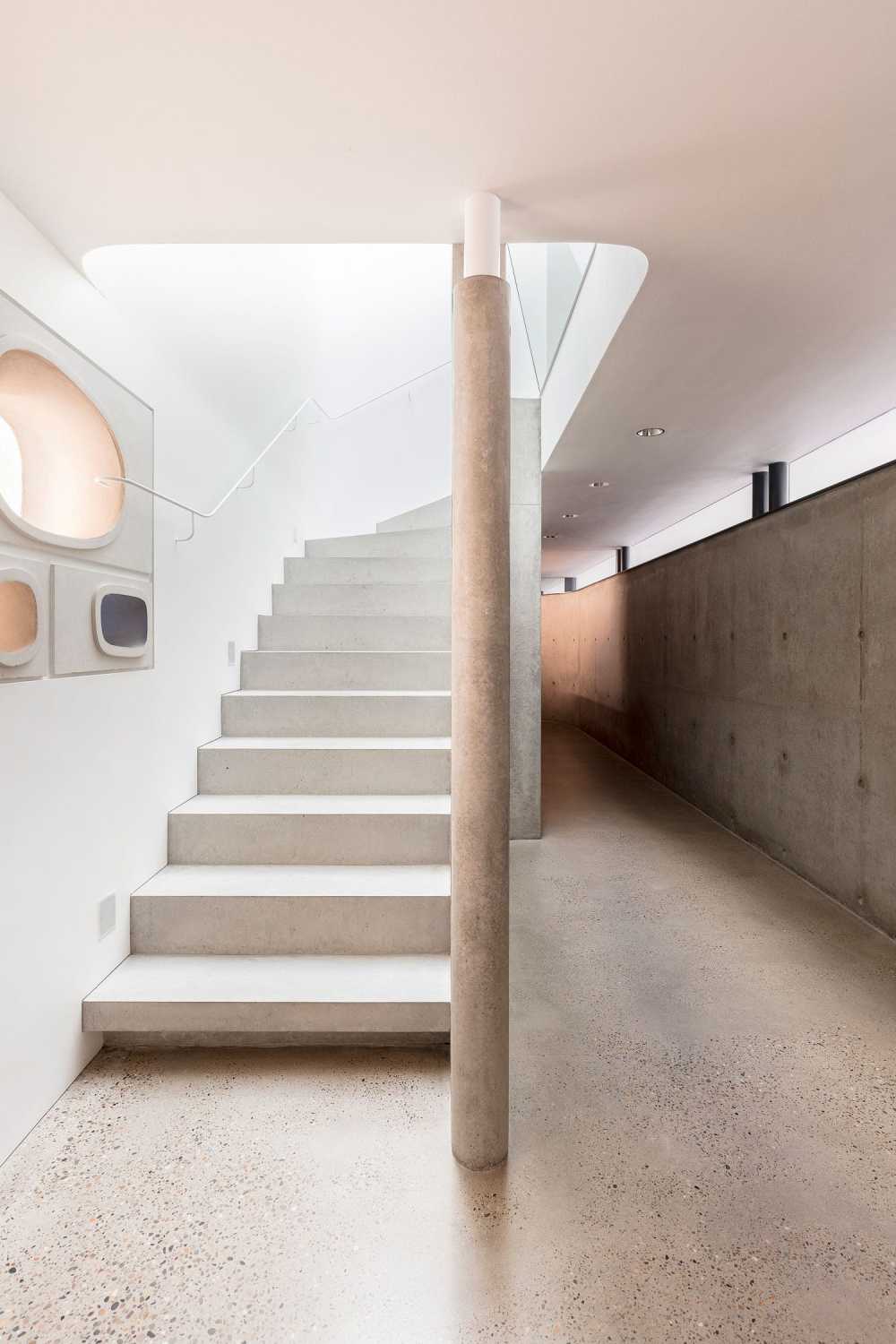 Tamarama House, 2015 by Durbach Block Jaggers. Photo by Tom Ferguson.
Tamarama House, 2015 by Durbach Block Jaggers. Photo by Tom Ferguson.
 Tamarama House, 2015 by Durbach Block Jaggers. Photo by Tom Ferguson.
Tamarama House, 2015 by Durbach Block Jaggers. Photo by Tom Ferguson.
 Tamarama House, 2015 by Durbach Block Jaggers. Photo by Brett Broadman.
Tamarama House, 2015 by Durbach Block Jaggers. Photo by Brett Broadman.
 Tamarama House, 2015 by Durbach Block Jaggers. Photo by Andrew Cohen.
Tamarama House, 2015 by Durbach Block Jaggers. Photo by Andrew Cohen.Tamarama House by Durbach Block Jaggers // This compact site on Tamarama Beach frames uninterrupted views to the ocean from multiple vantage points. On concrete, Neil Durbach says, “The interesting thing about this house is it explores the different versions of concrete that we’ve always loved – from rough as guts to glass-like – in the one project.”
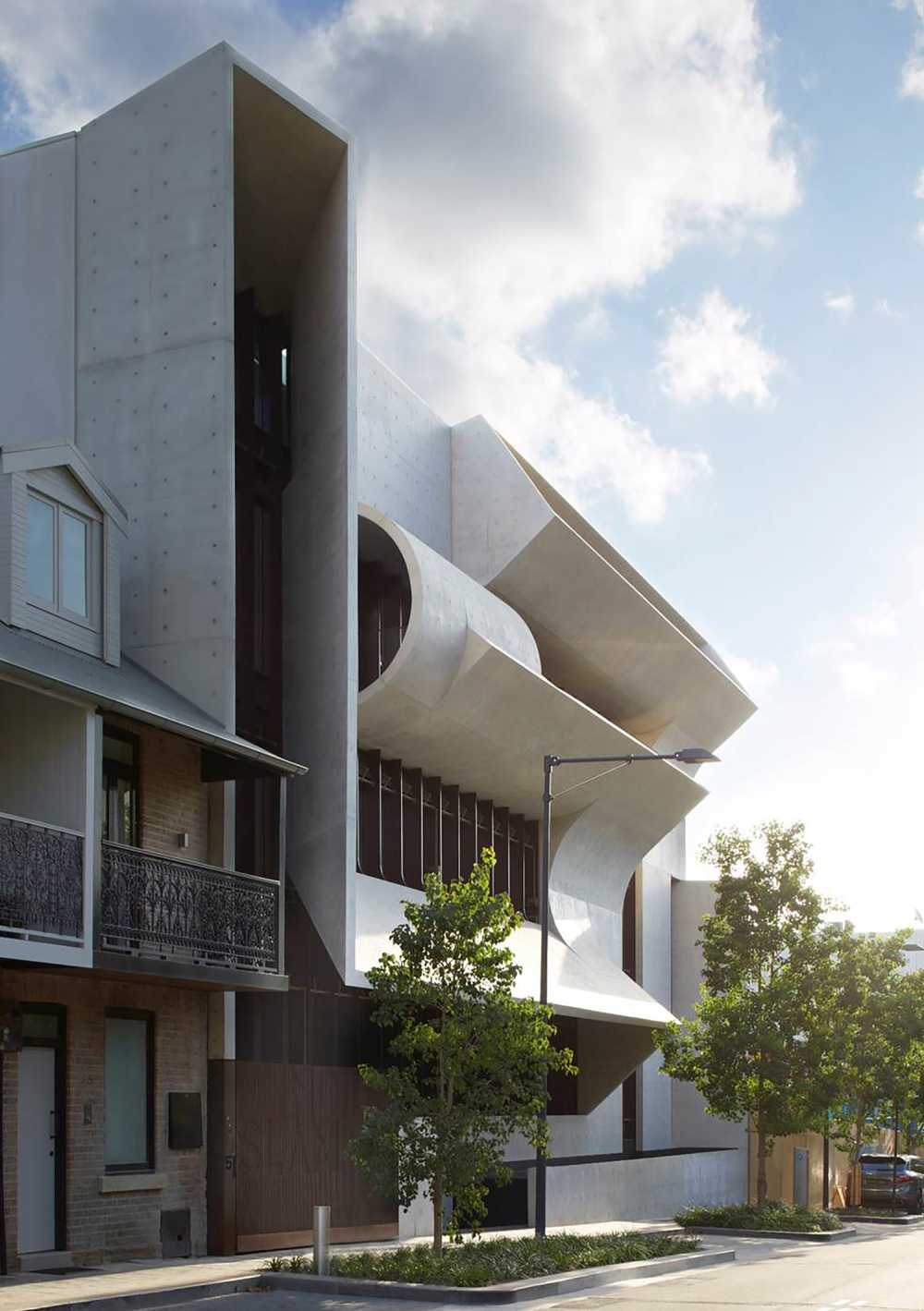 Indigo Slam, 2016 by Smart Design Studio in Chippendale, NSW. Photo by Sharrin Ress.
Indigo Slam, 2016 by Smart Design Studio in Chippendale, NSW. Photo by Sharrin Ress.
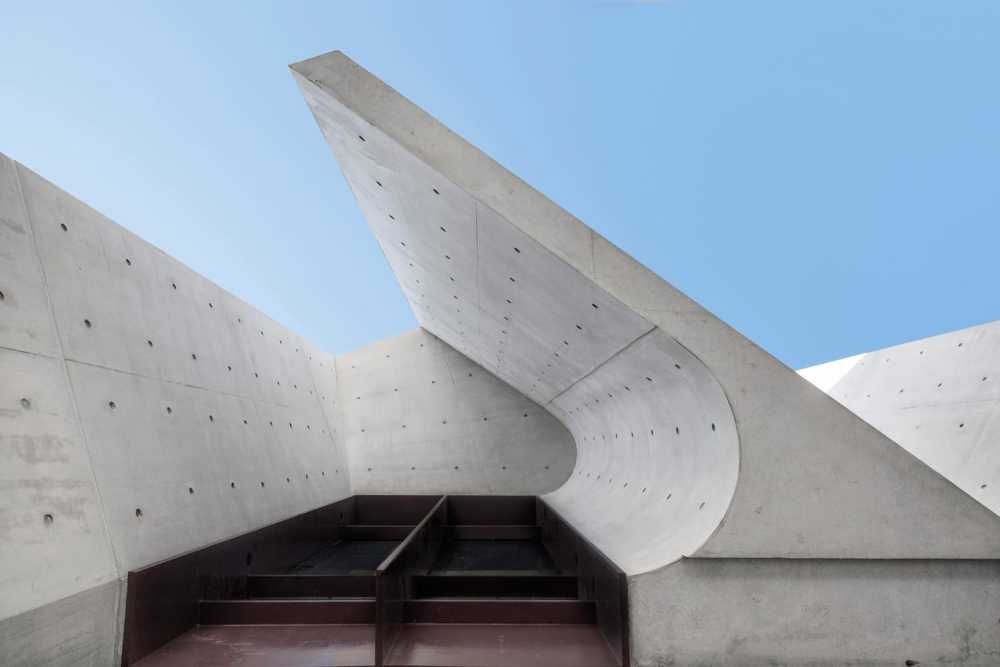 Indigo Slam, 2016 in Chippendale, NSW by Smart Design Studio. Photo by David Roche.
Indigo Slam, 2016 in Chippendale, NSW by Smart Design Studio. Photo by David Roche.
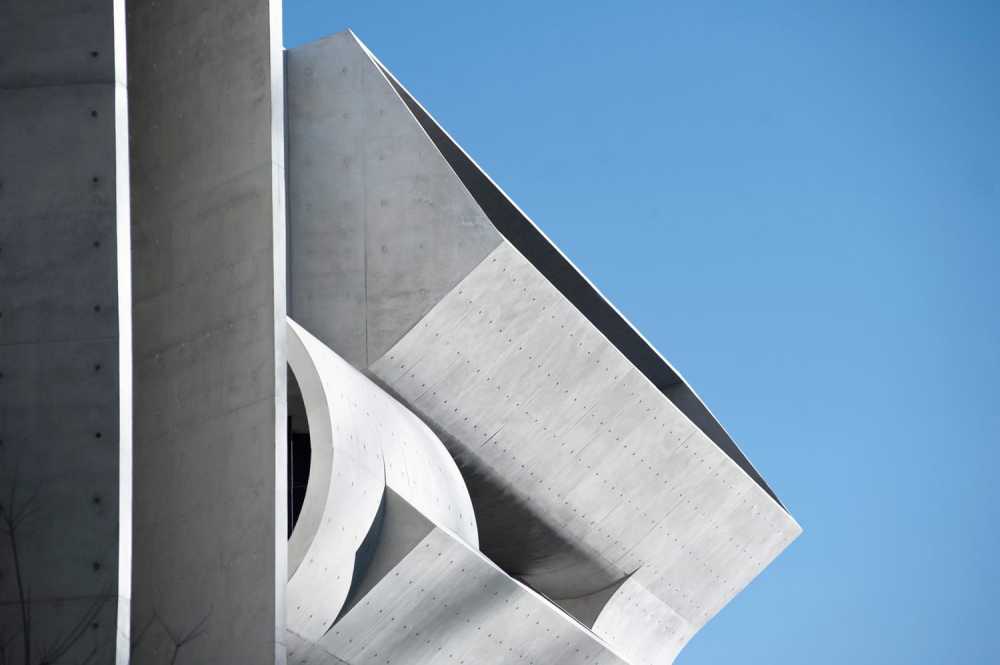 Indigo Slam, 2016 in Chippendale, NSW by Smart Design Studio. Photo by Rowena Moore.
Indigo Slam, 2016 in Chippendale, NSW by Smart Design Studio. Photo by Rowena Moore.
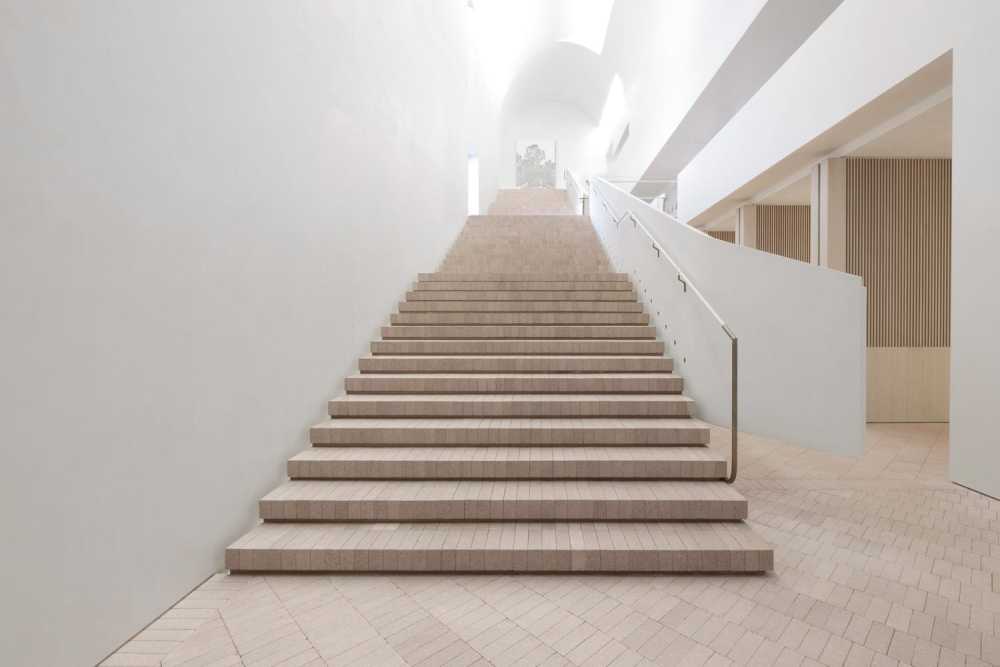 Indigo Slam, 2016 in Chippendale, NSW by Smart Design Studio. Photo by David Roche.
Indigo Slam, 2016 in Chippendale, NSW by Smart Design Studio. Photo by David Roche.
 Indigo Slam, 2016 in Chippendale, NSW by Smart Design Studio. Photo by David Roche.
Indigo Slam, 2016 in Chippendale, NSW by Smart Design Studio. Photo by David Roche.Indigo Slam by Smart Design Studio // This Chippendale residence has won just about every award in the books, each of them well deserved. Art collector/ philanthropist Judith Nielson told Smart Design Studio she wanted “the best house in the world,” and the concrete structure comes pretty damn close, with its sculptural facades, curving 12m ceilings and monumental halls.
 Concrete Bench for Ovolo Nishi, 2014 by Adam Goodrum. Photo by Joshua Ayett.
Concrete Bench for Ovolo Nishi, 2014 by Adam Goodrum. Photo by Joshua Ayett.Concrete Bench by Adam Goodrum // Concrete Bench was commissioned for Canberra’s Ovolo Nishi, formerly Hotel Hotel. Goodrum aimed to reflect the decorative style of Walter Burley Griffin and Marion Mahony Griffin, the founding architects of Canberra. “The Griffins were a strange blend of modernist and spiritualist and this can be clearly seen in the suburb they co-created; their one true Australian utopia, Castlecrag, on Sydney’s lower North Shore,” says Goodrum. “Some of the decorative fin-like rock formations at the front of some of the residences inspired the concrete bench.”
 Zoe vanity basin, AphraVanity, olympia taps and ‘Anna’ ParTaps Lugano spout by Wood Melbourne. Materials include; concrete & brass. Photo by Lisa Cohen & styling by Beck Simon.
Zoe vanity basin, AphraVanity, olympia taps and ‘Anna’ ParTaps Lugano spout by Wood Melbourne. Materials include; concrete & brass. Photo by Lisa Cohen & styling by Beck Simon.Bathroom hardware by Wood Melbourne // Wood Melbourne’s concrete basins, tapware, and backplates resonate with a softened, modern Brutalism, utilitarian yet sophisticated and elegant. They are made via a painstaking process of wet-casting by hand in moulds and then curing. Any minor flaw or inaccuracy is transferred to the end product, so each mould has to be custom made and perfected over time through trial and error. Definitely not your average sink! - 转载自:Yellowtrace
- 语言:English
- 阅读原文
|